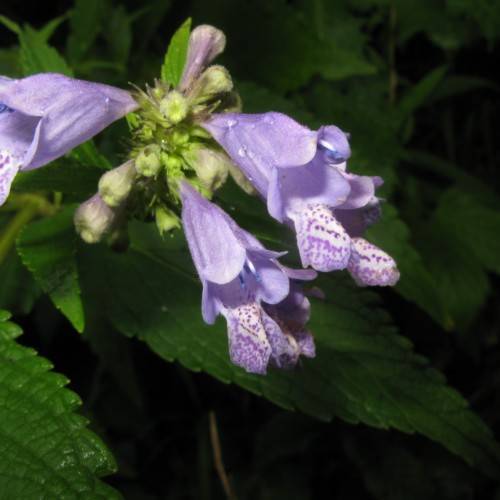
nepeta
Nepeta subsessilis 'Candy Cat'
Cycle:
Herbaceous Perennial
Watering:
Average
Hardiness Zone:
4 - 8
Flowers:
Flowers
Sun:
full sun,part shade
Leaf:
Yes
Growth Rate:
Low
Maintenance:
Low
Drought Tolerant:
Yes
Salt Tolerant:
Yes
Indoors:
Yes
Care Level:
Moderate
watering
Nepeta subsessilis 'Candy Cat' is a low-maintenance perennial plant that requires minimal attention to flourish. When planting, provide well-drained soil and ensure it gets ample sunlight. In terms of watering, give it consistently moist soil, but not soggy or water-logged. Water the soil around the plant, avoiding getting the leaves wet. Water about 1-2x per week during summer months, and 1x per week during winter. If there is a protracted period of high temperatures or drought, water more frequently. In addition, occasional light fertilizing can help your plant stay vibrant.
sunlight
Nepeta (Nepeta subsessilis 'Candy Cat') prefers lots of direct sunlight in order to thrive. For optimal health, it should receive 6 to 8 hours of full sun exposure each day. If it is kept in partial sun, it will require more frequent watering and may become leggy. If the plant is kept in a shadier area, try to move it to a brighter spot with more sunlight whenever possible. With ample sun exposure, nepeta prefers cooler temperatures during the day and will need to be covered from direct evening sun.
pruning
Nepeta should be pruned to maintain a desired shape and size. Pruning can be done in the spring shortly after new growth begins and again in midsummer. For the species Nepeta subsessilis 'Candy Cat', it should be pruned so that it maintains a height of 12-18 inches for best appearance. Pruning should involve making cuts just above the node, so about 1/4 inch above the point at which a leaf stem hits the main stalk. Pruning should also involve deadheading and trimming the tips of the stems to encourage a fuller shape.
